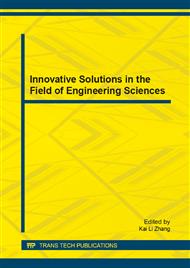p.224
p.229
p.234
p.239
p.244
p.249
p.254
p.261
p.266
Deep Hole of AISI P20 Mold Steel Material by Electrical Discharge Machining
Abstract:
This research aimed to study the machining efficiency of AISI P20 steel by Electrical Discharge Machining (EDM) using rod copper electrode to machining material by 50 mm depth of machining was mainly assessed from Materials Removal Rate (MRR) and Electrode Wear Ratio (EWR). From the experiment designed to use Taguchi technique of data analysis and suitable parameter prediction, the highest MRR was at on-time of 150 μs, off-time of 2 μs and electric current level was at 15 A or 0.25 A/mm2. Predicted value was at 19.2395 mm3/min which was equal to real experiment, showing Materials Removal Rate of 19.647 mm3/min (with error of 2.12 percent) .Moreover, it was found that gap would increase with the size of electrode and depth of machining caused by movement of particles removed from side surface of electrode, which cause micro sparks at the side of the material workpiece.
Info:
Periodical:
Pages:
244-248
Citation:
Online since:
June 2014
Authors:
Keywords:
Price:
Сopyright:
© 2014 Trans Tech Publications Ltd. All Rights Reserved
Share:
Citation:


